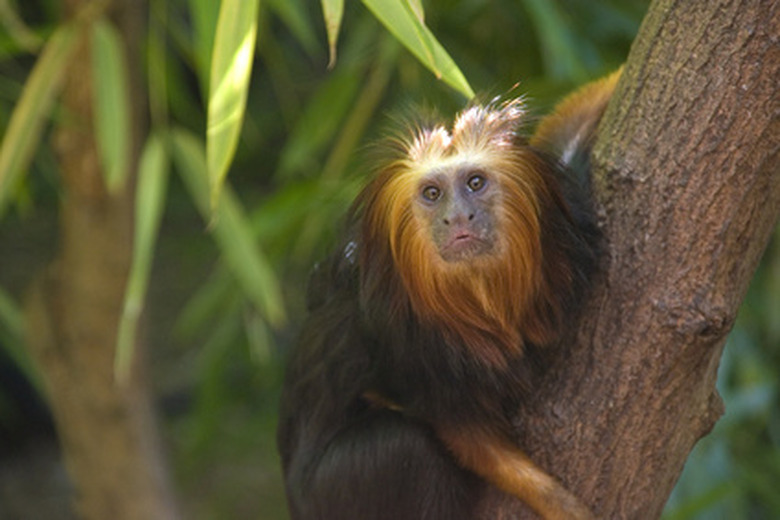Why Do Monkeys Live In The Rainforest?
It's not always easy to spot an animal in their natural habitat. Some, like cheetahs, tend to blend into their surroundings, and others, like blobfish, live in ocean homes so deep that humans can rarely access them. Rainforest monkeys, on the other hand, are often easy to spot if you're lucky enough to head out on a trek through the jungle. The animals are known for being playful tricksters, and they have developed all kinds of adaptations that help them thrive in the rainforest environment.
Types of Monkeys in the Rainforest
Types of Monkeys in the Rainforest
Monkeys live in all types of different habitats throughout the world, and many call the rainforest their home. Some of the more well-known rainforest monkeys include howler monkeys, named for the loud howls they emit that other animals can hear from more than 3 miles away. There are also marmosets like the pygmy marmoset, which is the world's tiniest monkey. Spider monkeys are another popular type of rainforest monkey. While spider isn't the scientific name of monkey, it is an appropriate nickname for it, because their long tails and limbs can make them look like spiders when they're in motion. The rainforest is also home to capuchin monkeys, known for their intelligence.
Inside the Monkey Environment
Inside the Monkey Environment
Rainforests are excellent homes for monkeys for many reasons. One is the abundance of food. Most monkeys are herbivores that chow down on fruits, leaves, nuts and sometimes insects, all of which are readily abundant year round in the steady climate and lush, dense trees of the rainforests. Those same trees also serve as protective homes for monkeys. Since monkeys can swing between branches high above the ground, they're able to stay away from large predators on the ground who have trouble climbing.
Monkey Adaptations for the Rainforest
Monkey Adaptations for the Rainforest
While the rainforest is usually a happy and safe home for monkeys, they have also developed several adaptations that have helped them to thrive in their environment. Some, like howler and spider monkeys, have prehensile tails. That means their tails can wrap around objects to grip them or manipulate them. Many monkeys use prehensile tails to swing from rainforest branches, which frees up both their hands and legs to snag food or fight off a predator. Another adaptation is their teeth. Some animals have trouble digesting a diet as fibrous as the monkey diet; however, many monkeys have developed strong molars that help break down the leaves that they eat, making them easy to swallow and digest. It's just one of the many ways that monkeys have developed and learned how to make the rainforest their home.
References
Cite This Article
MLA
Dragani, Rachelle. "Why Do Monkeys Live In The Rainforest?" sciencing.com, https://www.sciencing.com/do-monkeys-live-rainforest-6809187/. 22 November 2019.
APA
Dragani, Rachelle. (2019, November 22). Why Do Monkeys Live In The Rainforest?. sciencing.com. Retrieved from https://www.sciencing.com/do-monkeys-live-rainforest-6809187/
Chicago
Dragani, Rachelle. Why Do Monkeys Live In The Rainforest? last modified March 24, 2022. https://www.sciencing.com/do-monkeys-live-rainforest-6809187/
